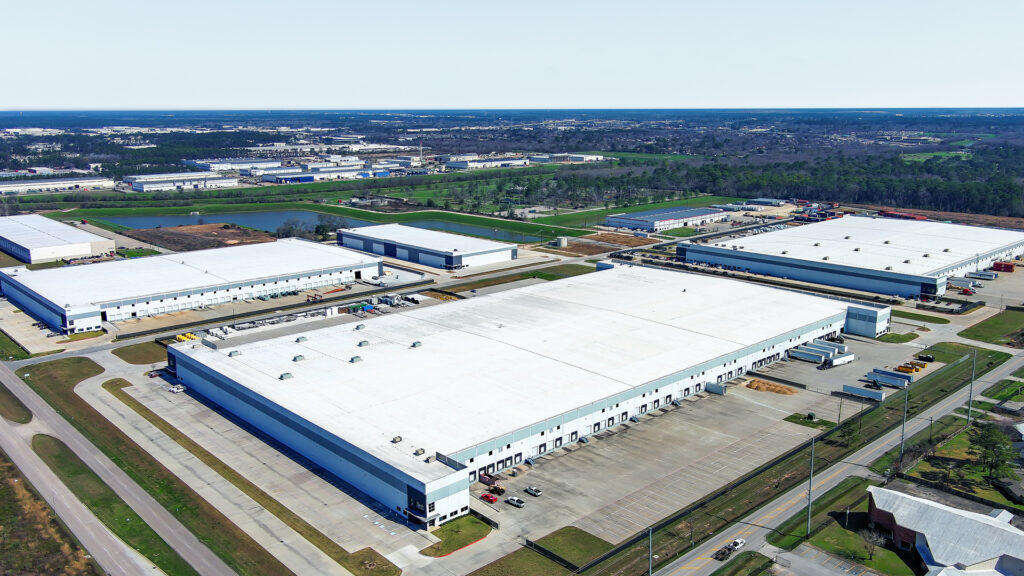Todays industrial real estate debt markets are robust for experienced borrowers with institutional partners, as well as for individual borrowers who are just beginning to grow their portfolios. Industrial real estate, along with the multifamily sector, is often considered one of the safest commercial real estate investments.
With the industrial-property sector awash in liquidity from both lenders and equity partners, commercial mortgage brokers should look to capitalize on strong market fundamentals, which include low vacancy rates and high demand for new and existing properties.
Mortgage brokers should understand how and why loans have specific prices in order to steer their clients to the best options. For lenders, the primary determining factor for industrial real estate financing beyond property-level fundamentals such as rental income, quality of the tenants and lease terms is the index that is linked to the loans maturity.
Libor is the commonly used benchmark index for construction loans, while the index for permanent loans is often the corresponding Treasury rate. A 10-year loan, for example, will usually be priced with a spread based on the 10-year Treasury rate.
A five-year loan, then, will often be based on the five-year Treasury rate. And a short-term construction loan which is often funded monthly during the construction phase may be priced using the 30-, 60- or 90-day Libor rate. In a typical financing environment, the cost to borrow increases as the underlying index rate increases.
Reasons for rising costs
We are currently in a rising interest rate environment. Assuming lenders maintain their underwriting criteria, it will become more expensive to borrow and loan proceeds may be reduced. Libor rates increased approximately 100 basis points over the 12 months ending this past September, while the 10-year Treasury rate increased about 80 basis points over the same period.
Borrowers need to be aware of this dynamic as an index may rise substantially from the time of the original underwriting to closing. As a result, borrowers may end up with more expensive financing than what was underwritten, smaller loan proceeds or both.
One critical factor to understand is the probability of an inverted yield curve in the near future. An inverted yield curve exists, for example, when the two-year Treasury rate is more expensive than its 10-year counterpart. In simple terms, this means that fixing long-term debt when the curve is flat or inverted may actually be less expensive than a short-term loan.
Assuming lenders maintain their underwriting criteria, it will become more expensive to borrow and loan proceeds may be reduced.
The yield curve seems to be headed toward an inverted trajectory by the end of this year or early in 2019. As a result, there is very little benefit today to financing an industrial real estate acquisition with a floating-rate loan or a short-term bridge loan, provided the lender offers flexible prepayment penalties. Although less-expensive interest rates may be great news for borrowers with stabilized assets who want to hold them for the long term, its worth noting that the inverted yield curve also has preceded every U.S. recession since 1960.
Mortgage brokers and borrowers who understand the economics behind interest rates should next know about three primary sources of debt for the industrial real estate sector. These include traditional banks, life insurance companies and the commercial mortgage-backed securities (CMBS) market.
Banks get competitive
Historically, the traditional sources for many industrial-property loans are community, regional and national banks. Many banks today can offer a wide variety of financing options, from long-term fixed-rate loans to short-term bridge loans and, depending on the banks size and credit policy, even construction loans.
In the past 24 months, banks have become more accommodating to borrowers through their financing terms as they attempt to win business in a competitive environment. That being said, as a group, banks are more conservative today than during the last real estate cycle and appropriate underwriting standards continue to be in place. It seems banks and hopefully borrowers, too remember the difficult lessons learned during the Great Recession.
Recourse is a main differentiator between banks. Simply put, some banks require personal recourse and/or loan guarantees to approve financing, whereas others are willing to provide lower-leverage loans on a nonrecourse basis. This poses some philosophical questions for both lenders and borrowers to consider: In essence, is it appropriate, given the property-level fundamentals, to make a nonrecourse loan to a borrower? And, in the same vein, should a borrower take out a loan they can only obtain by allowing lender recourse?
Each lender and borrower will need to determine their risk tolerances and the right answer may be different depending on the situation. But, by and large, signing a recourse provision will tend to result in either higher leverage, a lower interest rate or both.
Although interest rates are on the rise, banks are typically offering fixed-rate loans in the range of 4.75 percent to 5.5 percent, depending on borrower and property-level details, as well as the requested amount of leverage. Banks also tend to be the most accommodating lenders with prepayment penalties.
Some banks allow the loan to be paid off at par immediately (i.e., no prepayment penalty) and others provide flexibility outside of the first 12 to 24 months. Banks are often the best fit for transitional properties, relationship lending or borrowers who want lower-leverage, nonrecourse loans and do not want to deal with the headaches of CMBS lending.
A low-risk option
Life insurance companies are often good lenders for borrowers who do not want to push up leverage levels and have stabilized industrial properties. Life insurance companies tend to be more risk-adverse than banks and usually seek to finance high-quality industrial buildings in the best markets.
The primary goal for these companies is to match their liabilities with corresponding loan maturities. As a result, they are a prime solution for long-term loans 10 years or more given their annual obligations to those they insure. Lower-leverage deals for amounts above $15 million are being priced with a spread of 125 to 150 basis points above the corresponding index.
This spread pricing means that, even though long-term Treasury rates are rising, the total annual interest costs are only marginally more expensive than last year because spreads have compressed. For smaller life insurance companies that grant loans of less than $10 million, interest rates are approximately 25 to 75 basis points higher than those of larger loans.
The typical life insurance borrower is usually a long-term holder of assets that wants solid cash flow during their holding period, given the life insurance companys preference for lower-leverage deals. Compared to CMBS and even banks, life insurance lenders generally dominate the lower edge of the risk spectrum.
For borrowers who play in this area, they are rewarded with low interest rates and strong cash flow. In other words, the typical life insurance borrower is usually less focused on generating a high internal rate of return and more concerned with creating stable cash flow and cash-flow multiples (earnings before interest, taxes, depreciation and amortization).
Secondary-market rebound
The CMBS market has found its footing after it all but disappeared following the Great Recession. The fact that CMBS lenders must now retain a portion of their loans on their balance sheet has helped to increase underwriting standards throughout the industry. And, unlike the pre-recession days, buyers of these securitized loans today have significant influence over what loans can be included in a securitized loan pool.
According to various projections, 2018 CMBS loan volume should be around $80 billion to $90 billion, compared to an astronomical figure of $229 billion in 2007. The CMBS market is primarily attractive to borrowers that want leverage higher than 60 percent, nonrecourse provisions and interest-only payments for some or all of the loan term.
Borrowers need to understand the hidden risks of CMBS loans, however. Often, these loans are faceless, since they are sold off in a variety of tranches to multiple investors, making any type of workout difficult. And should a borrowers business plan change for any reason, there is little to no flexibility for prepaying the loan without yield maintenance or a hefty prepayment penalty. The CMBS market definitely serves a niche, but borrowers, including those pursuing industrial real estate deals, need to be careful.
Overall, it is a great time to be an industrial real estate investor, meaning commercial mortgage brokers also can benefit from working in this sector. The market fundamentals are as strong as they have ever been and, nationally, vacancy rates are at all-time lows.
Supply is generally in line with demand across all major markets and the demand from high-quality owners is robust. With a multitude of financing options available, borrowers have the luxury of choosing their lender and creating a competitive environment to negotiate the best possible loan terms.




